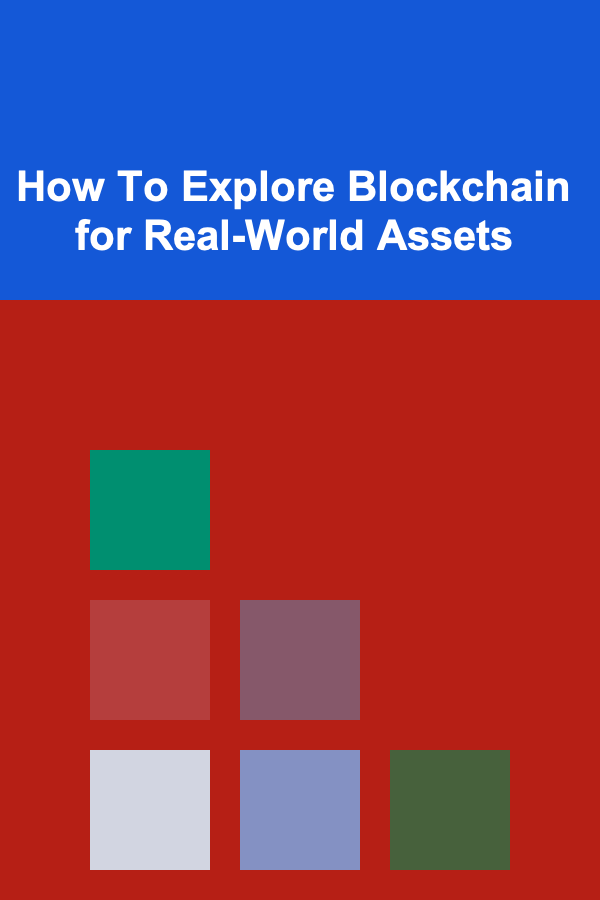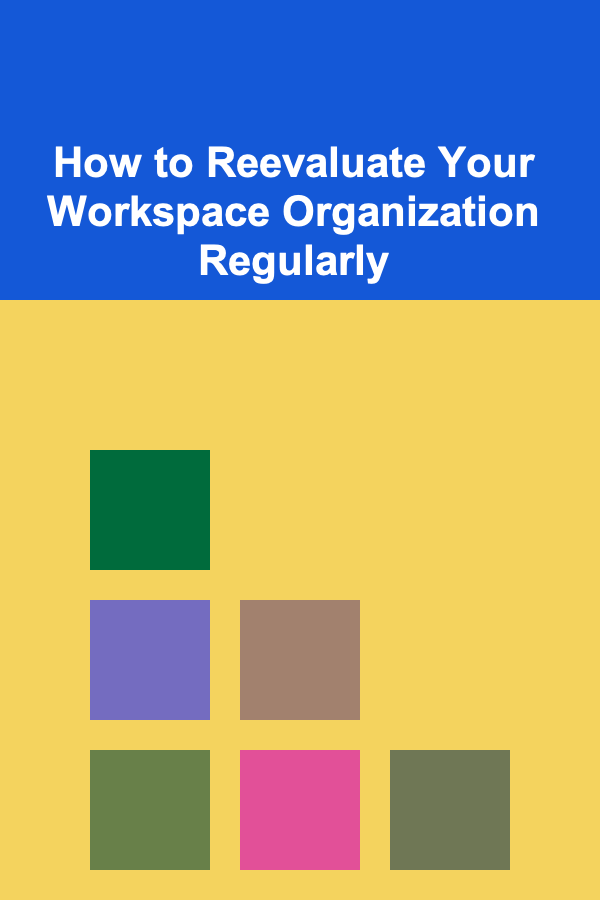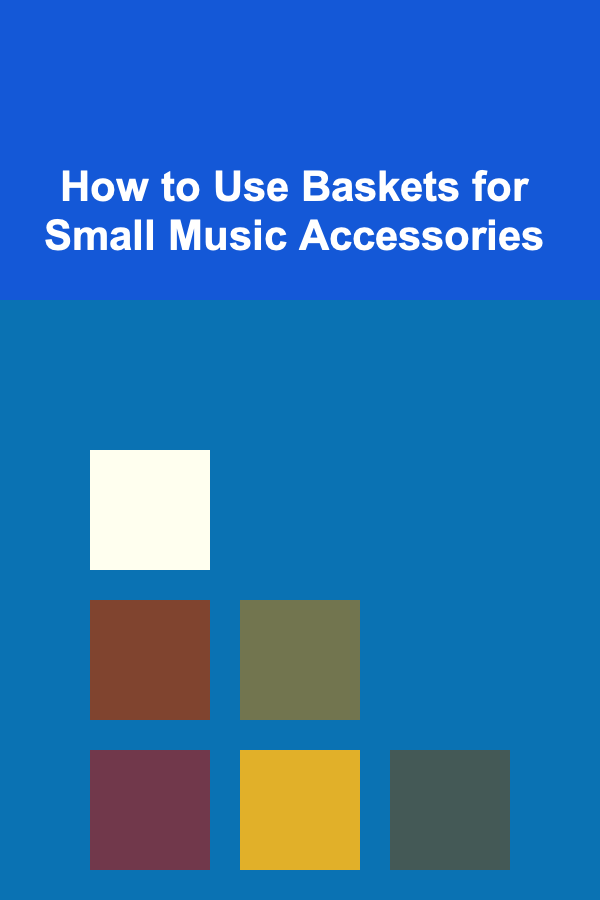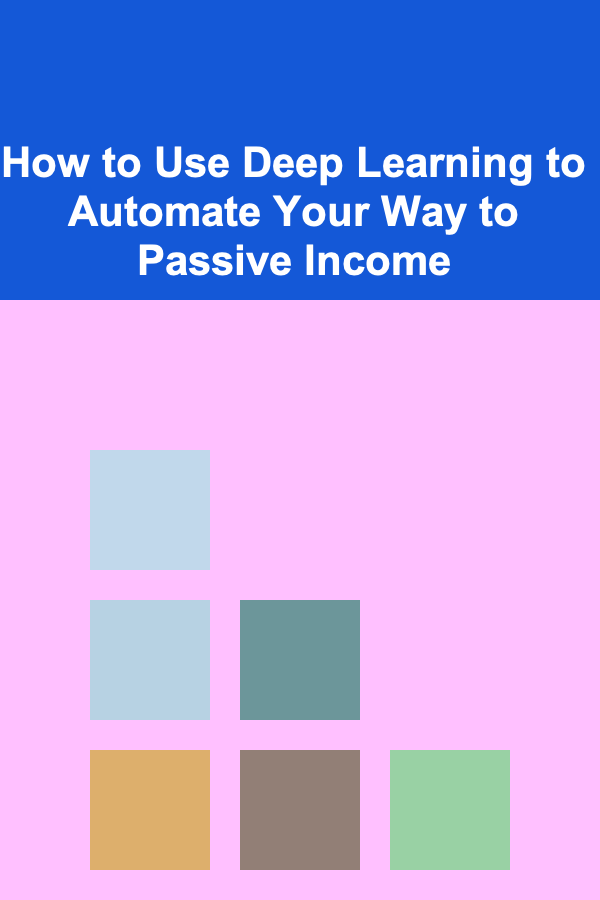
How To Explore Blockchain for Real-World Assets
ebook include PDF & Audio bundle (Micro Guide)
$12.99$11.99
Limited Time Offer! Order within the next:

Blockchain technology has revolutionized the way we think about digital transactions, data security, and decentralization. Originally known for its association with cryptocurrencies like Bitcoin, the potential applications of blockchain are far more expansive. One of the most intriguing and transformative uses of blockchain is in the tokenization of real-world assets (RWAs).
Real-world assets, such as real estate, art, commodities, and financial instruments, have traditionally been represented in physical or paper form, subject to intermediaries like banks, brokers, and notaries. Blockchain provides an innovative framework that allows these assets to be represented digitally, making them more accessible, transparent, and efficient.
In this article, we will delve into how blockchain can be used to explore and manage real-world assets. We will explore the core principles behind tokenization, the different types of RWAs, the benefits and challenges of implementing blockchain for RWAs, and some real-world examples of blockchain applications in various industries.
What is Blockchain and Tokenization?
Before we explore how blockchain can be applied to real-world assets, it's essential to understand two fundamental concepts: blockchain technology and tokenization.
Blockchain Technology
At its core, blockchain is a distributed ledger technology (DLT) that allows data to be stored in a decentralized and secure manner. The ledger consists of blocks of data that are linked together in a chain. Each block contains a list of transactions, and once added, the data in the block cannot be altered or removed without altering every subsequent block, making it highly secure.
Blockchain's decentralized nature eliminates the need for intermediaries such as banks or brokers. The consensus mechanisms in blockchain ensure that all participants on the network agree on the validity of transactions, creating a trustless and transparent environment.
Tokenization
Tokenization refers to the process of converting real-world assets into digital tokens that are stored on a blockchain. These tokens represent the ownership or share of the underlying asset. For example, a piece of real estate can be tokenized by dividing it into several digital tokens, each representing a fraction of the property's value.
Tokenization of assets provides numerous benefits, including increased liquidity, fractional ownership, transparency, and reduced transaction costs. It makes it easier for individuals and organizations to buy, sell, and trade assets that were once illiquid or difficult to access.
Real-World Assets and Their Blockchain Applications
Real-world assets can encompass a wide range of physical or non-physical items. Below, we will explore how blockchain can be applied to some of the most common categories of real-world assets.
1. Real Estate
The real estate market is one of the most promising sectors for blockchain adoption. Traditional real estate transactions can be cumbersome, requiring numerous intermediaries, complex paperwork, and time-consuming processes. Blockchain can streamline these processes, making the transfer of ownership more efficient and transparent.
Tokenization of Real Estate
By tokenizing real estate, properties can be broken down into smaller, tradable shares, allowing individuals to invest in high-value assets that they might not have been able to afford otherwise. This opens up the market to a broader range of investors, leading to increased liquidity and diversification of portfolios.
For example, a property worth $1 million can be tokenized into 1,000 tokens, each representing 0.1% ownership of the property. These tokens can then be bought and sold on blockchain platforms, enabling fractional ownership of real estate.
Smart Contracts in Real Estate
In addition to tokenization, blockchain can also facilitate the use of smart contracts in real estate transactions. Smart contracts are self-executing contracts with the terms of the agreement directly written into code. Once predefined conditions are met, the contract automatically executes, reducing the need for intermediaries such as lawyers or notaries.
For instance, when a buyer agrees to purchase a property, a smart contract could automatically trigger the transfer of funds to the seller, the update of the ownership records, and the recording of the transaction on the blockchain. This reduces the risk of fraud and ensures transparency throughout the process.
2. Art and Collectibles
The art and collectibles market is another area where blockchain can have a transformative impact. The authenticity, ownership, and provenance of artwork and collectibles have always been challenging to verify. Blockchain offers a secure, transparent, and immutable way to track the ownership and history of an asset.
Non-Fungible Tokens (NFTs)
NFTs, or Non-Fungible Tokens, are a specific type of blockchain token that represent unique items, such as digital art, music, videos, and collectibles. Unlike cryptocurrencies like Bitcoin or Ethereum, which are fungible and interchangeable, NFTs are unique and cannot be replaced by another token of the same kind.
NFTs provide artists and collectors with a new way to prove ownership and provenance of digital or physical artworks. By tokenizing an artwork as an NFT, artists can sell their work directly to buyers, bypassing intermediaries like galleries or auction houses. Blockchain also ensures that the history of the artwork, including previous ownership and sales, is transparent and easily accessible.
Fractional Ownership of Art
Blockchain also enables the fractional ownership of high-value art pieces. Just like real estate, artwork can be tokenized and divided into multiple shares, allowing investors to purchase fractions of a valuable piece of art. This democratizes access to the art market and allows individuals to invest in prestigious artworks without needing to buy the entire piece.
3. Commodities and Natural Resources
Commodities like gold, oil, and agricultural products are essential to the global economy. However, these markets often face challenges related to transparency, traceability, and inefficiency. Blockchain can address these issues by providing a transparent and immutable record of transactions and ownership.
Tokenization of Commodities
The tokenization of commodities involves converting physical assets, such as gold or oil, into digital tokens. Each token represents a specific amount of the commodity, allowing investors to trade and invest in commodities more efficiently. For example, a gold bar can be tokenized into several digital tokens, each representing a fraction of the bar's value.
This tokenization allows for easier trading, increased liquidity, and lower barriers to entry for investors. Blockchain also ensures that the authenticity and ownership of the commodity are transparent and traceable.
Supply Chain Tracking
Blockchain technology can also be used to track the movement of commodities throughout the supply chain. By recording each step of the supply chain on the blockchain, all participants can verify the origin, quality, and transportation history of the commodity. This increases transparency and helps prevent fraud or disputes regarding the product's provenance.
4. Financial Instruments and Securities
Blockchain can play a significant role in revolutionizing the financial industry by tokenizing financial instruments like stocks, bonds, and derivatives.
Tokenized Securities
Traditional securities like stocks and bonds are typically traded on centralized exchanges. However, blockchain allows these securities to be tokenized and traded on decentralized platforms. Tokenized securities represent ownership in a company or a financial instrument, but unlike traditional securities, they can be traded 24/7 on blockchain networks, providing increased liquidity and accessibility.
Initial Coin Offerings (ICOs) and Security Token Offerings (STOs)
Blockchain enables new methods of raising capital, such as ICOs and STOs. ICOs allow companies to issue their own tokens in exchange for funds, while STOs involve the issuance of tokenized securities that comply with regulations. These fundraising methods provide a more direct and transparent way for companies to raise capital and for investors to participate in funding projects.
Benefits of Blockchain for Real-World Assets
The tokenization of real-world assets using blockchain technology offers numerous benefits for both investors and asset owners. These include:
1. Increased Liquidity
By tokenizing assets, such as real estate or art, investors can buy and sell fractions of these assets, increasing market liquidity. This allows for a more active and accessible market, with less reliance on traditional intermediaries.
2. Fractional Ownership
Blockchain enables fractional ownership of assets, meaning that investors can own a portion of an asset without needing to purchase the entire asset. This opens up opportunities for smaller investors to diversify their portfolios and participate in markets that were previously inaccessible.
3. Transparency and Security
Blockchain's decentralized nature ensures that all transactions and ownership records are transparent and immutable. Once a transaction is recorded on the blockchain, it cannot be altered or erased, providing a high level of security and reducing the risk of fraud.
4. Reduced Transaction Costs
By eliminating intermediaries and automating processes through smart contracts, blockchain can reduce the costs associated with buying, selling, and transferring assets. This results in faster and more cost-effective transactions.
5. Accessibility
Blockchain-based platforms enable global access to tokenized real-world assets. Investors from any part of the world can participate in the market, without the need for physical presence or reliance on traditional financial institutions.
Challenges and Considerations
While blockchain presents numerous advantages for real-world asset tokenization, there are also several challenges that need to be addressed.
1. Regulatory Uncertainty
The regulatory landscape surrounding blockchain and tokenized assets is still evolving. Different countries have different rules and regulations regarding the use of blockchain for asset tokenization. Clear and consistent regulation is necessary to ensure that these technologies are adopted safely and legally.
2. Market Adoption
The widespread adoption of blockchain for real-world asset tokenization requires the buy-in of traditional institutions such as banks, brokers, and governments. Overcoming resistance to change and convincing these stakeholders to embrace blockchain technology will be a significant hurdle.
3. Technological Barriers
While blockchain technology is advancing rapidly, there are still technical challenges that need to be addressed. These include scalability, interoperability between different blockchain networks, and ensuring that blockchain platforms can handle the complexity of tokenizing a wide variety of real-world assets.
Conclusion
Blockchain technology has the potential to revolutionize the way we manage and trade real-world assets. Through tokenization, assets such as real estate, art, commodities, and financial instruments can be digitized, allowing for fractional ownership, increased liquidity, and reduced transaction costs. Despite the challenges of regulatory uncertainty and market adoption, blockchain offers a new and innovative way to explore and manage real-world assets, creating a more accessible, transparent, and efficient financial ecosystem. As technology continues to evolve and gain mainstream acceptance, blockchain will undoubtedly play a central role in shaping the future of asset management.
Reading More From Our Other Websites
- [Home Party Planning 101] How to Manage Guest List and RSVPs Efficiently
- [Home Holiday Decoration 101] How to Choose the Right Size Christmas Tree for Your Space
- [Home Pet Care 101] How to Train Your Pet to Stay Out of Certain Rooms
- [Home Rental Property 101] How to Use Smart Home Technology to Improve Your Rental Property
- [Home Budget 101] How to Plan for Unexpected Home Repairs Without Breaking the Bank
- [Personal Investment 101] The Best Ways to Earn Passive Income with Deep Learning Applications
- [Home Renovating 101] How to Choose Eco-Friendly Flooring Options for Your Home
- [Gardening 101] The Best Garden Design Ideas for Small Spaces
- [Home Renovating 101] How to Maximize Small Space Storage Solutions for a Clutter-Free Home
- [Home Space Saving 101] How to Store Large Items Like Bikes in Small Apartments

How to Create a Playlist That Keeps the Party Vibes Going
Read More
How to Reevaluate Your Workspace Organization Regularly
Read More
How to Use Baskets for Small Music Accessories
Read More
How to Use Deep Learning to Automate Your Way to Passive Income
Read More
How To Play the Baglama: A Journey into Turkish Folk Music
Read MoreHow to Build a Custom Employee Attendance Tracker (If You Really Need To)
Read MoreOther Products

How to Create a Playlist That Keeps the Party Vibes Going
Read More
How to Reevaluate Your Workspace Organization Regularly
Read More
How to Use Baskets for Small Music Accessories
Read More
How to Use Deep Learning to Automate Your Way to Passive Income
Read More